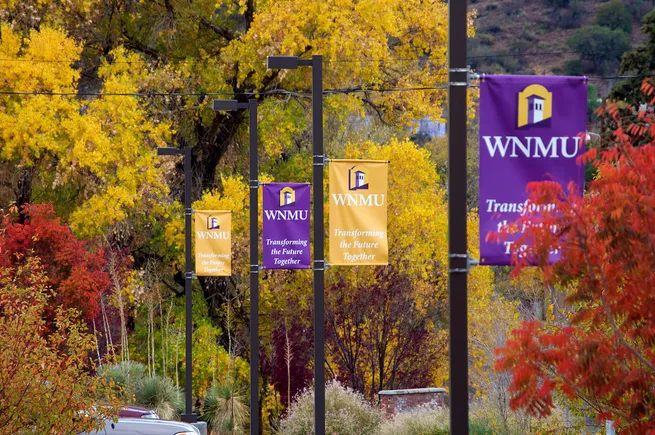The threat of climate change has exposed more homes to flooding and wildfires, and it has intensified heat waves that prompt farmers to lose crop yields and a way to sustain a living. Climate change, among many issues, worries Barbara Schneider as she thinks about whether younger generations will be prepared to face scientific challenges altering the world.
“I have been very concerned about the lack of engagement that young people have in science, especially because of the issue of climate change, the problems of scientific literacy, the ability to understand misinformation, and how young people are going to function,” says Schneider, a Michigan State University professor whose research examines how social contexts influence adolescent development.
In response, Schneider and researchers from Michigan State and the University of Helsinki in Finland developed a curriculum called Crafting Engagement for Science Environments and published a related book. The goal is to improve science literacy among high school students by making lessons meaningful and relevant to their lives through a teaching method called project-based learning. The curriculum also primes students for college and potential careers in science.
Now the STEM curriculum is poised to enter high school classrooms in the rural South. Michigan State is partnering with two historically Black colleges and universities, Alabama A&M University and Winston-Salem State University in North Carolina, to adapt the curriculum to serve students in the South. The project is funded through a nearly $8 million innovation grant from the U.S. Department of Education and will last five years.
The collaboration, researchers from Michigan State and Alabama A&M say, is rooted in an equitable sharing of knowledge and best practices between the institutions. The participation of HBCUs is notable in part because they play a key role in training future K-12 science teachers.
“Historically Black colleges and universities have an outstanding reputation in terms of building science courses in their undergraduate and graduate programs,” Schneider says.
She notes that the partnership aims to avoid “parachuting,” the phenomenon when large research institutions extract information from communities that have fewer resources or fail to tap into local expertise.
By partnering with HBCUs, the hope is that the curriculum will be more culturally responsive to the needs of students in the rural South.
Think Like a Scientist
The lessons focus on chemistry and physics, two “gatekeeper” subjects that are typically seen as more difficult, Schneider says.
Students will learn to think like scientists. How does electricity get to your home, and what are the components of a utility cable? Since many teenagers drive, how might they build a safer car?
The curriculum has been taught to more than 6,000 students in California and Michigan, Schneider says, with close monitoring from researchers. They observed classrooms. They administered surveys to teachers and students and developed assessments that were given when the program started and after it ended. They also set up a randomized controlled trial, which is designed to measure whether the intervention worked and changed science learning and achievement, Schneider says.
Early results from previous studies showed some students were able to improve their science test scores, Schneider says. The curriculum aligns with the principles of Next Generation Science Standards. The standards, released in 2013, are based on up-to-date scientific research and aim to give teachers more flexibility when creating learning experiences, yet some schools have been slow to implement the standards due to a lack of funding earmarked for teacher training and textbooks.
Other challenges seem to have set back STEM education, too. Across the country, the COVID-19 pandemic disrupted hands-on learning experiences, and in California, for example, many school districts did not prioritize science education in their academic recovery plans.
Many rural students have also struggled to access high-quality STEM education because of a lack of resources. This barrier is top of mind for Schneider. The universities involved in the new curriculum are “making sure that the resources are available to the students,” she says, noting they are actively working to get reliable Wi-Fi in participating schools, universities and homes.
As the demand for highly skilled workers in STEM continues to grow, the new curriculum emphasizes supporting students’ “usable knowledge,” meaning students are able to tackle new and complex situations instead of solely memorizing facts.
“You want to make sure that the students are engaged in science practices, and are able to build crosscutting concepts, ideas that basically are in all of the sciences, and help us to understand why things happen,” Schneider says. “That gives us the tools that we need to be able to solve problems that we may not know how to do, but we can take the challenge, and we can find out how to fix it.”
Building a Diverse Talent Pipeline
The pilot program in the rural South is expected to begin sometime next year. The researchers are looking at public high schools with higher-than- average proportions of students from low-income backgrounds and students of color. Chemistry and physics teachers within these schools will deliver the curriculum.
Once implemented, researchers will also collect data and study the curriculum’s impact using the same methods as in previous studies.
“The most important thing for me is to do social science that can be replicated by other people,” Schneider says, adding she hopes more HBCUs will join the project.
When Michigan State reached out to Alabama A&M University, Samantha Strachan thought the partnership was a good fit and a way to improve how students in Alabama learn science.
“It’s an opportunity for us. As we exchange information, that’s also going both ways, right. They’re learning from us, and we’re learning from them,” says Strachan, an associate professor and program coordinator of secondary education at Alabama A&M who oversees the recruitment, training and retention of math and science teachers.
“We want to make sure that children in the rural South have access to quality science teaching, teachers have access to up-to-date curricula, for instance, or engage in new approaches to curricula,” she adds.
Alabama A&M is the largest HBCU in the state and is home to 6,100 undergraduate, graduate and doctoral students. The campus is located near two employers of STEM professionals, NASA’s Marshall Space Flight Center in Huntsville and Redstone Arsenal, a U.S. Army base.
Right now, faculty at the HBCUs are evaluating the current curriculum and seeing how the lessons can be modified for students in Alabama and North Carolina. Teachers will act as a “bridge” between the field of science and the students they serve.
“We’re all having lots of team meetings,” Strachan says. “We’re participating in professional development, making sure that we’re all using the same verbiage as we are in different parts of the United States as well as in different institutions.”
Another layer of expertise the HBCUs contribute to the project is an extensive background in culturally responsive instruction.
In this context, culturally responsive instruction means examining various aspects of a culture that link a community together, whether it’s how students go to school, what they eat, types of buildings in a neighborhood and so on, and using that information to shape lessons so that they resonate with students. Some additional examples of potential, relevant learning experiences could include units on how Wi-Fi transmits information using electromagnetic waves and how energy efficiency affects homes.
This approach could also encourage students to make positive changes in their own communities.
“You’re taking the cultural resources and using that to help the students learn,” says Clausell Mathis, an assistant professor at Michigan State University whose research interests include physics education. He’s also a member of the research team who’s tasked with helping develop project-based, culturally responsive lessons.
That approach is also crucial in building a pipeline of students interested in STEM careers, Strachan says, choices that can be determined early in their educational journey.
The curriculum could help make STEM professions more reflective of the country — the lack of racial diversity in the field has persisted despite an increasing demand for STEM education.
“It’s not just about meeting you where you are but understanding who you are,” Strachan says of culturally responsive teaching strategies. “What are you experiencing in the world and how we can use that as a foundation for teaching you content — whether it’s in physics, or whether it’s in chemistry — and making sure teachers understand the students they serve.”





















Discussion about this post